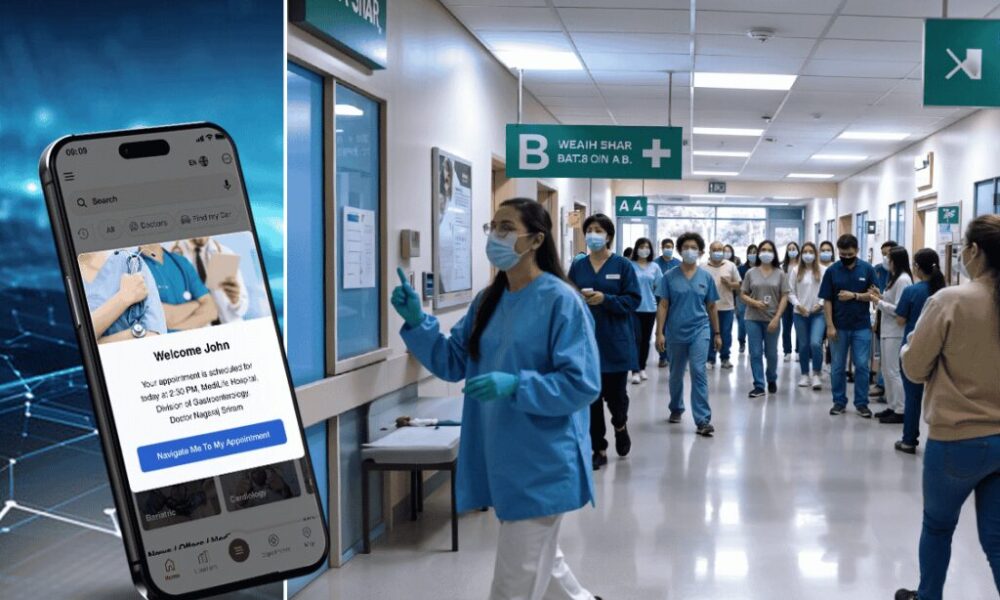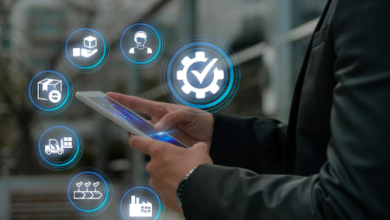Top 7 Indoor Positioning System Service Providers for the Healthcare Industry (2025)

Studies show nurses lose up to an hour per shift just searching for equipment, and 10–20% of mobile assets go missing. Indoor Positioning Systems (IPS) solve these problems using technologies like BLE, UWB, ultrasound, and software-only GPS to track people and assets inside buildings.
Hospitals adopt these technologies to streamline workflows, enhance patient flow tracking, improve asset management and comply with infection control measures. The market is crowded, so here are seven leading indoor positioning system service providers for healthcare in 2025 and how they stand out.
1. Mapsted Technologies – Hardware‑Free Indoor Navigation and Real‑Time Insights
Mapsted Technologies, a Canadian indoor location company, offers a unique beacon-free indoor positioning system tailored for complex environments like hospitals. Unlike many vendors that rely on battery-powered beacons or access points, Mapsted’s solution uses smartphone sensors and advanced cloud algorithms—eliminating the need for extra hardware.
Mapsted focuses on building smart healthcare environments. Their system tracks real-time patient flow, reduces wait times, and provides insights into congestion levels, staff availability, and room utilisation. It also supports emergency routing, asset tracking, and context-aware messaging—all without the hassle of hardware maintenance.
The company has a strong global footprint, with deployments across North America, Europe, the Middle East, and Asia. Their client portfolio includes Miami International Airport, University of Windsor, Hôpitaux Universitaires de Genève (HUG), the U.S. Department of Veterans Affairs, PepsiCo, Takenaka Corporation, and SoftBank. In India, some prominent hospitals are using Mapsted’s system to improve hospital navigation and operational efficiency.
This hardware-free, low-maintenance approach makes Mapsted a compelling choice for healthcare providers looking to modernise without adding infrastructure costs—while delivering a better experience for both patients and staff.
2. Zebra Technologies – Enterprise RTLS with Hardware Integration
Zebra Technologies is a well-established player in the RTLS space, offering hospital solutions built around BLE, RFID, and infrared technologies. Their system helps track assets, monitor patient movement, and improve staff safety using hardware-based tags and wearables.
While effective, Zebra’s approach relies heavily on physical infrastructure—like badges, sensors, and Wi-Fi access points—which can add complexity and ongoing maintenance. For hospitals seeking a more hardware-light, flexible alternative, newer software-driven providers like Mapsted offer a lower-maintenance path to similar outcomes.
3. CenTrak – Clinical-Grade RTLS with IoT Wearables
CenTrak is a long-standing RTLS provider in healthcare, offering room-level to sub-meter accuracy using Bluetooth, infrared, and other clinical-grade tech. Their system combines tags, badges, IoT wearables, and integrations with EMRs and nurse call systems to improve patient flow and reduce delays.
Use cases include hand-hygiene compliance, patient safety, asset tracking, and staff duress alerts. While reliable, CenTrak’s hardware-based model contrasts with Mapsted’s maintenance-free, software-driven approach.
4. Sonitor – Ultrasound Precision with Smartphone Support
Norway-based Sonitor uses ultrasound-based RTLS, offering strong room-level accuracy with support for BLE and Wi-Fi. It’s ideal in settings where RF interference is an issue.
However, it requires dedicated tags and fixed receivers. For hospitals seeking easier deployment without hardware overhead, Mapsted’s beacon-free solution is a lighter, scalable option.
5. Quuppa – Bluetooth AoA for High Accuracy and Infection Control
Quuppa, from Finland, leverages Bluetooth Angle-of-Arrival (AoA) to offer sub-meter tracking via BLE devices, including smartphones and wearables.
Though cost-effective, it still depends on BLE beacons and physical setup. Mapsted offers similar precision with no infrastructure, making it a leaner fit for dynamic hospital environments.
6. Kontakt.io – AI-Powered BLE RTLS for Smarter Workflows
Kontakt.io blends BLE, AI, and IoT to track staff, patients, and assets. It supports alerts, navigation, and workflow insights via cloud dashboards and EHR integration.
Despite flexibility, it relies on badges, tags, and beacons. Hospitals looking to reduce hardware dependency may prefer Mapsted’s software-only system for smoother scaling.
7. Ubisense – UWB Accuracy with Predictive Safety Features
Ubisense offers high-fidelity tracking with UWB sensors and SmartSpace software, enabling advanced features like fall prediction, contact tracing, and equipment alerts.
While powerful, UWB setups are costly and hardware-heavy. Mapsted’s infrastructure-free model provides a simpler alternative for hospitals prioritising ease and efficiency.

Choosing the Right Indoor Positioning System for Your Hospital
Hospitals vary in size, infrastructure, and goals—so no single IPS fits all. Here’s how to weigh your options:
- Need zero maintenance?
Mapsteduses smartphone sensors and cloud processing—no beacons, no access points. Ideal for hospitals wanting indoor navigation without hardware headaches or high CapEx. - Want asset tracking with light infrastructure?
iooffers BLE-powered tags with AI dashboards. Works well if you already have strong Wi-Fi and want quick workflow insights. - Strict on radio interference?
Sonitoruses ultrasound for room-level accuracy—suitable for clinics with sensitive medical equipment. - Looking for infection control tools?
Quuppa’sBluetooth AoA supports features like hand-hygiene monitoring and patient movement tracking. - Need sub-meter accuracy + predictive insights?
Ubisenseuses UWB sensors for fall prediction, contact tracing, and high-precision tracking—but comes with higher setup costs. - Prioritising full system integration?
CenTrakconnects RTLS with EMRs, nurse call systems, and IoT wearables for robust patient safety workflows.
Match your IPS choice to what you need most—navigation, asset visibility, staff tracking, or analytics. But whichever path you take, adopting RTLS is no longer a luxury. It’s becoming as essential as Wi-Fi for running safe, efficient, and patient-friendly hospitals.

Source: Top 7 Indoor Positioning System Service Providers for the Healthcare Industry (2025)



